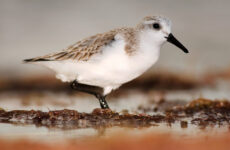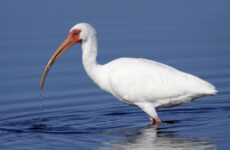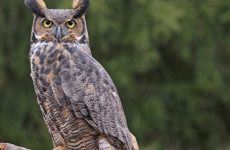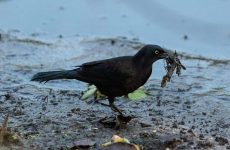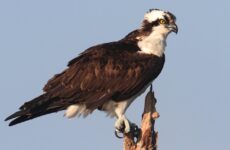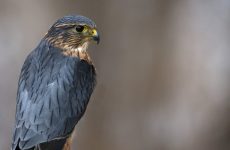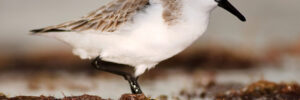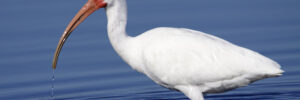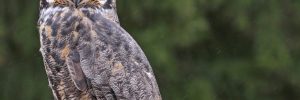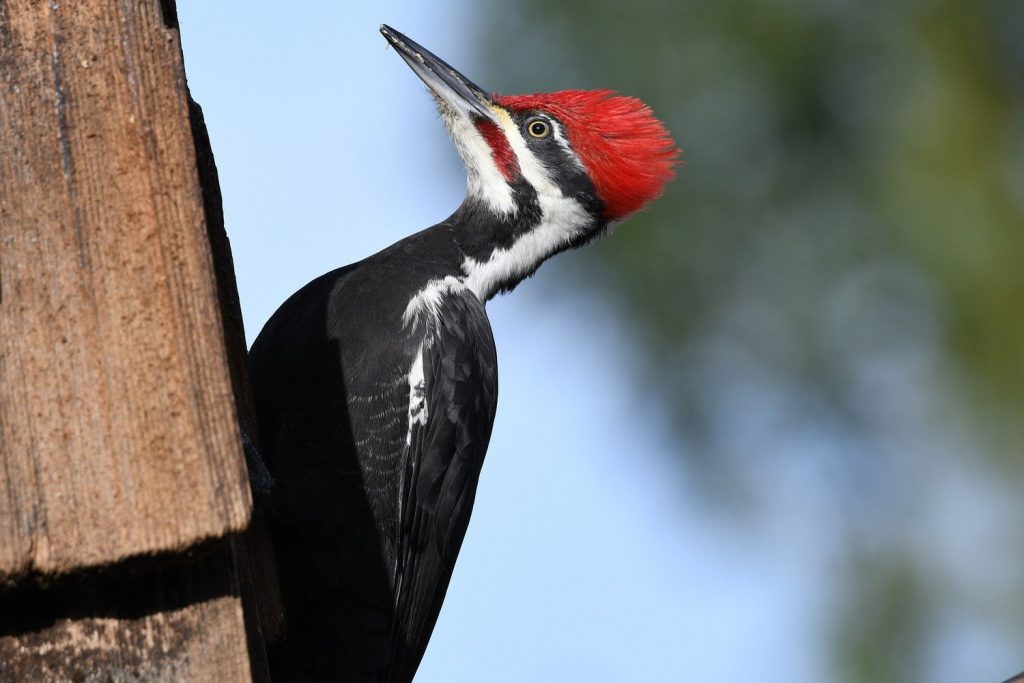
Woodpeckers are fascinating birds that can hit their heads with up to 1000g of force on trees. That’s a lot of force. Compare it to a human that would get brain damage at 100g of force.
There are 9 species of woodpecker in Alabama that have been spotted. Of these, 8 species are recognized on state checklists as regularly occurring, and one additional species is considered rare or accidental.
Going out birding in the woods and forest is the best way of seeing woodpeckers in Alabama. However, some such as Red-bellied Woodpeckers, Hairy Woodpeckers Downy Woodpeckers, and Northern Flickers can regularly be seen on backyard feeders.
This guide will help you identify the woodpecker species in Alabama according to avibase.
Woodpeckers make distinctive drumming sounds, especially in the spring when they are looking for a mate. Both male and female woodpeckers make drumming sounds.
Some woodpeckers migrate, such as Red-headed Woodpeckers, Yellow-bellied Woodpeckers, and Northern Flickers.
The most common woodpecker in both summer and winter in Alabama is the Red-bellied Woodpecker. The Yellow-bellied Sapsucker and other species are more commonly seen in winter in Alabama.
There are some gross woodpecker facts if you want to understand more about these fascinating birds.
You can print out a free bird identification photo guide for Alabama to help you identify all birds that visit your backyard.
Read on to find out all about the woodpeckers in Alabama, with pictures, videos, and what sounds they make.
This site is reader-supported and as an Amazon Associate, I earn a commission if you purchase a product I recommend at no extra cost to you.
The 9 Types of Woodpecker in Alabama
1. Red-bellied Woodpecker
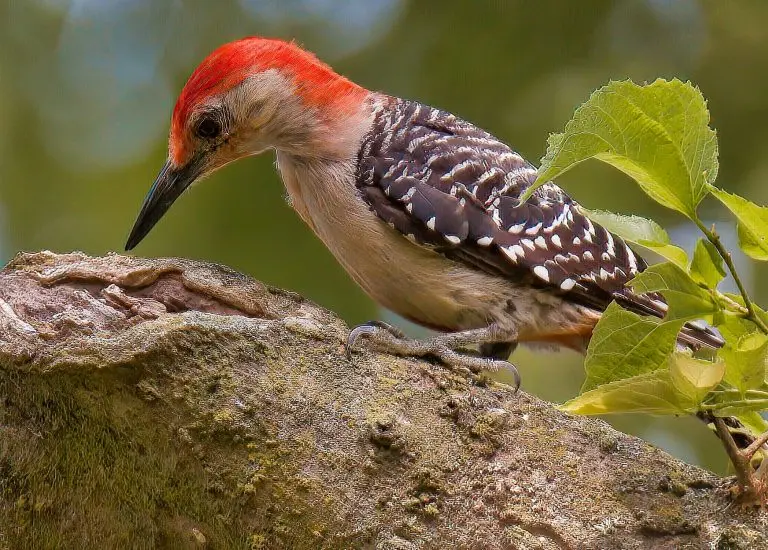
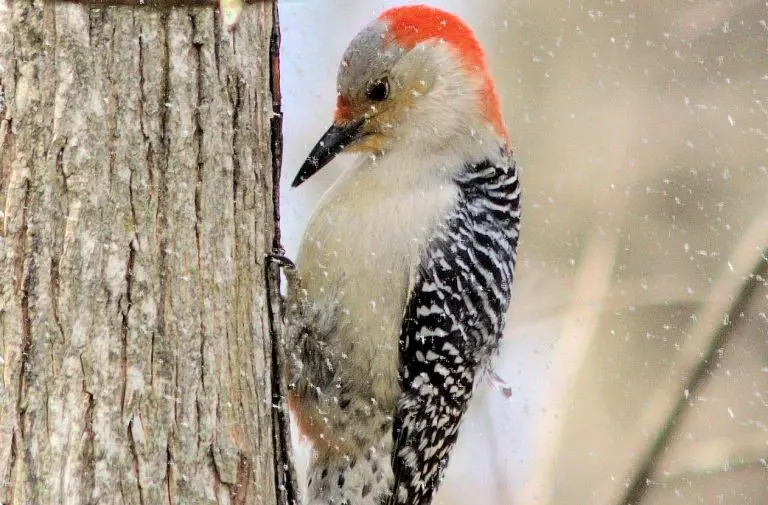
Red-bellied Woodpeckers are common in Alabama all year.
Red-bellied Woodpeckers can be mistaken for Red-headed Woodpeckers as they have red caps, but they are much smaller than the Red-headed Woodpecker. Female Red-bellied Woodpeckers lack the red cap and only have red napes.
Length: 9.4 in (24 cm)
Weight: 2.0-3.2 oz (56-91 g)
Wingspan: 13.0-16.5 in (33-42 cm)
They have a very pale red belly that can be hard to spot but have the typical black and white markings over their backs.
Red-bellied Woodpeckers can be found in the Eastern US, and they do not migrate.
Red-bellied Woodpeckers can often be seen at bird feeders, especially if you live near wooded areas. They make a distinctive loud rolling call which means you will often hear them before you see them.
Red-bellied Woodpeckers eat insects, spiders, seeds from grasses, fruit, and nuts. They will also sometimes eat nestlings. They nest in dead trees and may use the same nest year after year. They lay 4-5 white eggs on a bed of wood chips.
The tongue of the Red-bellied Woodpecker sticks out 2 inches past the beak and is barbed at the tip, along with sticky spit. This helps catch prey from deep crevices.
Red-bellied Woodpecker call and drumming
They make a shrill call and drum against trees at about 19 beats per second.
Where to spot Red-bellied Woodpeckers:
Red-bellied Woodpeckers are common in woodlands and forests in the eastern US but can be seen on bird feeders.
How to attract more Red-bellied Woodpeckers to your backyard feeders:
Red-bellied Woodpeckers will come to backyards for suet and black oil sunflower seeds. They can also be seen on hummingbird feeders and will feed on fruit. Also, plant native berry trees such as hawthorn or mountain-ash.
2. Downy Woodpecker
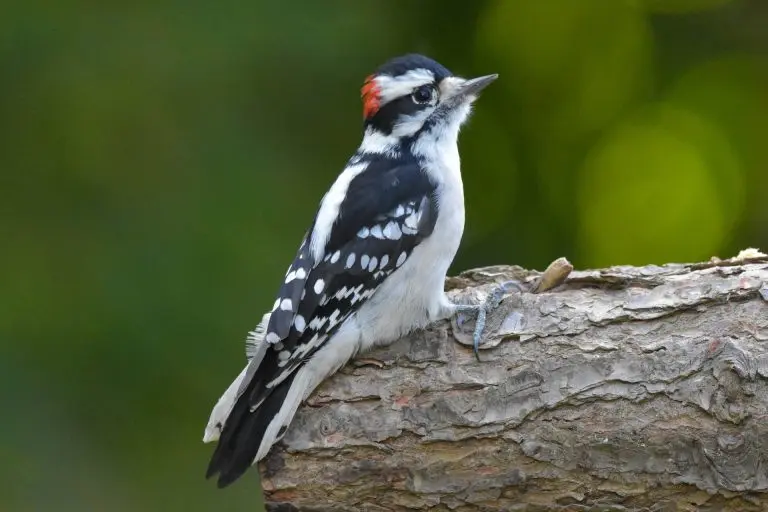
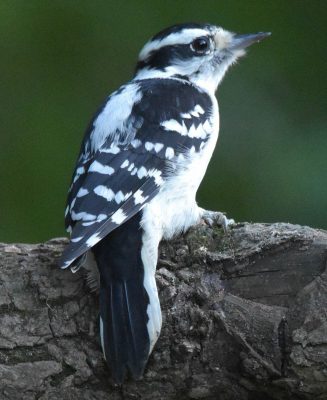
Downy Woodpeckers can be found all year round in Alabama.
The Downy Woodpecker has black and white patterning, mostly black with a white patch on their backs. The males also have a red patch on the back of their heads.
- Length: 5.5-6.7 in (14-17 cm)
- Weight: 0.7-1.0 oz (21-28 g)
- Wingspan: 9.8-11.8 in (25-30 cm)
Although visually very similar to the Hairy Woodpecker, it is a third smaller and with a smaller beak compared to other woodpeckers. It is usually a Downy Woodpecker that you see at feeders as they are more common.
Downy Woodpeckers are very common throughout the US and Canada. They are not found along the southern border with Mexico or the North of Canada.
Downy Woodpeckers can be found on backyard bird feeders. They make a high-pitched pik sound and the descending whinny call and are very active, so fun to watch. Downy Woodpeckers nest in dead tree cavities and lay between 3-8 small (0.8 in) white eggs.
Downy woodpeckers eat mainly insects, especially larvae, nuts and they also eat berries, acorns, and grains. They will sometimes be seen drinking from hummingbird feeders.
Downy Woodpecker call
Downy Woodpeckers are the most common woodpecker. They make a slightly slower drumming sound, so you can hear more of the individual drums than the Hairy Woodpecker, to which they look and sound similar.
Credit: www.xeno-canto.org Aiden Place
Where to spot Downy Woodpeckers:
Downy Woodpeckers are often seen mixed in with other small birds such as nuthatches and chickadees. They can be found in open woodlands and parks, orchards, and backyards and are commonly seen at feeders. They can also be seen amongst tall weeds.
How to attract more Downy Woodpeckers to your backyard:
An upside-down suet feeder is excellent for smaller woodpeckers such as Downy Woodpeckers as they offer protection from the rain and help stop bully birds. A bulk pack of suet cakes is a more economical way of buying them.
Also, black oil sunflower seeds attract more Downy Woodpeckers to your yard, and if you combine them with suet in great combination suet and hopper feeder, you get two feeders in one.
3. Northern Flicker
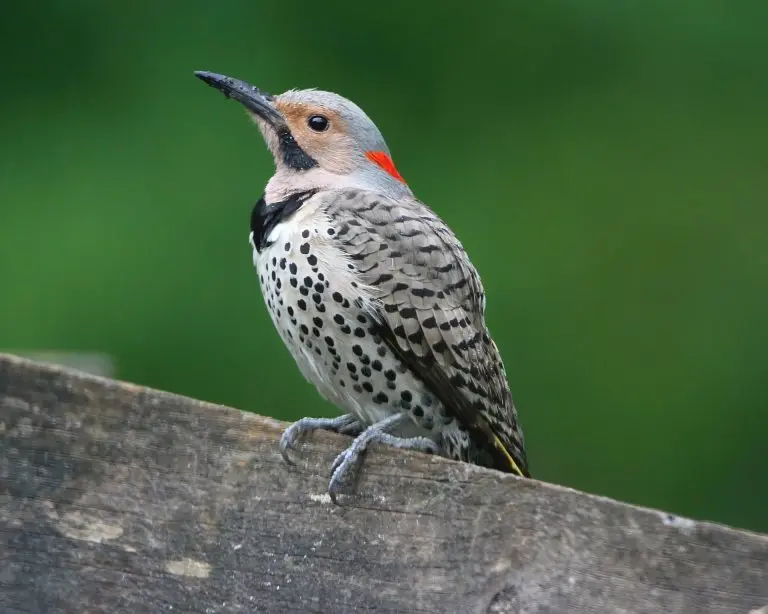
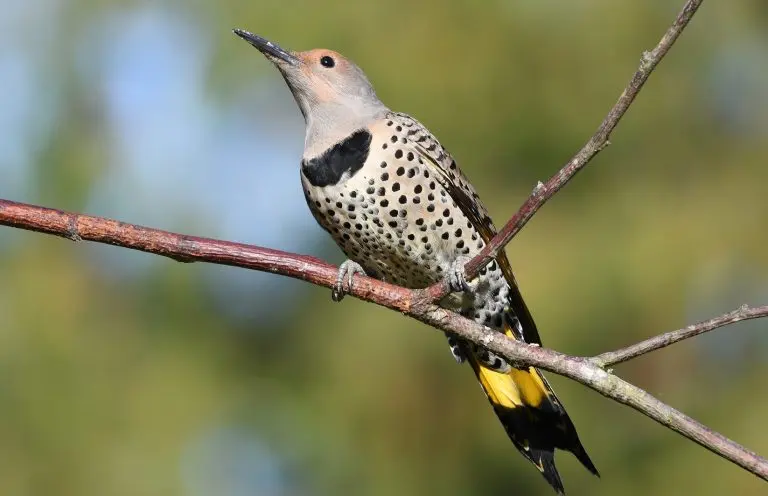
Northern Flickers are residents of Alabama all year, but they are more commonly seen during winter.
Northern Flickers are large brown woodpeckers with colorful black-spotted plumage with a white patch on its rump in flight plus a red nape of the neck in the males.
Northern Flickers have red or yellow flashes in the wings and tail depending on where they originate. Red-shafted birds live in the west, and yellow-shafted birds live in the east.
Length: 11.0-12.2 in (28-31 cm)
Weight: 3.9-5.6 oz (110-160 g)
Wingspan: 16.5-20.1 in (42-51 cm)
They can be spotted across all of the US and Canada, but those that breed in Canada migrate south for the winter.
Northern Flickers make a loud ringing call with a piercing yelp. They nest in tree cavities, and they lay 5-8 white eggs. They mainly eat ants and beetles and fruits and seeds and can often be seen on the ground digging them up with their curved bill.
Northern Flickers call and drumming:
Northern Flickers are quite large woodpeckers, and so their drumming is loud compared to smaller woodpeckers. They also make a long call that sounds like ‘flick – flick-flick’.
Where to spot Northern Flickers:
Northern Flickers can be seen in open woods, forest edges, and parks, and suburbs. They are often on the ground foraging for food.
How to attract more Northern Flickers to your backyard feeders:
Northern Flickers do not come as often to bird feeders, but they can be seen at a birdbath, so adding an attractive pedestal birdbath or a heated birdbath for the winter is your best bet. You can try to encourage them by having black oil sunflower seeds, hulled sunflower seeds, safflower seeds, suet, cracked corn, peanuts, and millet on suet cages, large hoppers, or platform feeders.
You can also put up a nest box suitable for flickers to attract a breeding pair and plant berry-producing plants like grape, bayberries, hackberries, or elderberries.
4. Pileated Woodpecker
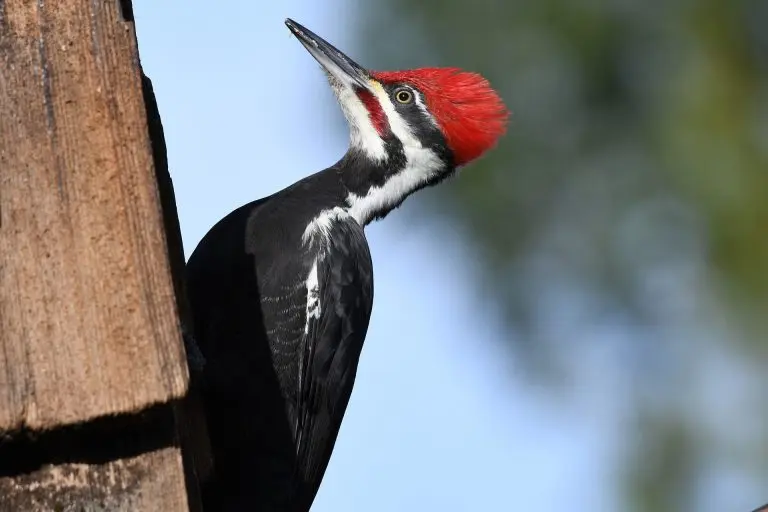
The biggest Woodpecker in Alabama is the Pileated Woodpecker, and they can be spotted in the state all year.
It is one of the biggest woodpeckers being nearly the size of a crow. It is mostly black with a white stripe, and when flying, the white underside of the wings can be seen. Males have an additional red stripe on the cheek.
Length: 15.8-19.3 in (40-49 cm)
Weight: 8.8-12.3 oz (250-350 g)
Wingspan: 26.0-29.5 in (66-75 cm)
They live all year in Eastern US states, across Canada, and into Northwestern US states.
Pileated Woodpeckers mostly eat carpenter ants from dead trees and fallen logs, but they also eat beetle larvae, termites, and other insects as well as fruit and nuts such as blackberries, sumac berries, dogwood, and elderberry. They make a loud shrill, whinnying call and deep, loud drumming.
Dead trees are used for nesting sites for Pileated Woodpeckers, and they usually make a new one each year, so the old nest site is often used by other species of birds. They usually lay 3-5 white eggs.
Pileated Woodpecker call and drumming:
Pileated Woodpeckers drum is loud and booming due to their size. They also make a ‘wuk-wuk-wuk’ call and one that sounds like laughing.
Credit: https://www.xeno-canto.org/ Peter Ward and Ken Hall
Where to spot Pileated Woodpeckers:
They are usually found in mature forests or drowned forests with lots of dead trees, but they also visit backyard feeders, especially for suet. They make distinctive rectangular holes in trees, so look out for these.
How to attract more Pileated Woodpeckers to your backyard:
Pileated Woodpeckers come to backyard bird feeders, especially for suet. They also eat black oil sunflower seeds, hulled sunflower seeds, suet, peanuts, and mealworms. Also, try putting up a nest box to attract a breeding pair.
Pileated woodpeckers prefer suet feeders with tail props and enjoy suet with added mealworms.
5. Red-headed Woodpecker
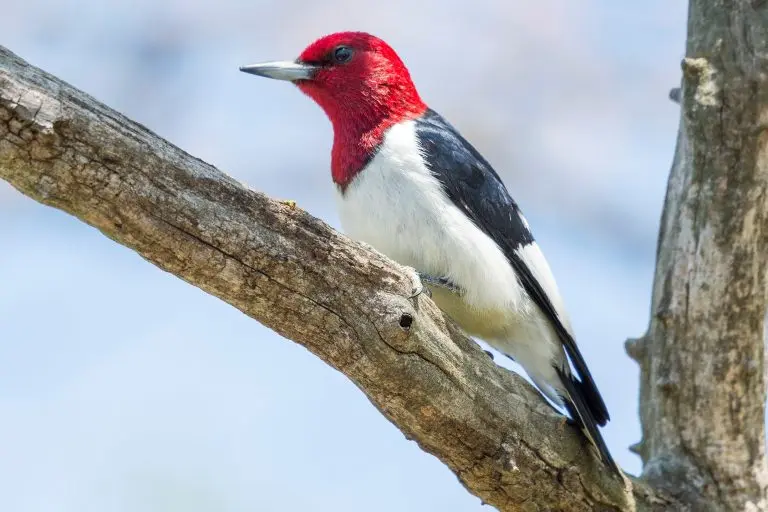
Although not very common in Alabama, Red-headed Woodpeckers can be spotted here all year.
With their bright red-heads and black and white bold markings, these woodpeckers are one of the easiest to identify. Red-headed Woodpeckers are medium-sized with powerful spike bills. They have white undersides, black backs and large white bands on the wings, and short tails.
Length: 7.5-9.1 in (19-23 cm)
Weight: 2.0-3.2 oz (56-91 g)
Wingspan: 16.5 in (42 cm)
Red-headed Woodpeckers can be found in Eastern and Central US states and into southern Canada. Those in the north and east of the range may migrate further east and south depending on acorn crops.
They can fiercely defend their territories, even removing or destroying the eggs of other birds or ducks. Red-headed Woodpeckers will catch insects in flight as well as in crevices like other woodpeckers.
Insects such as beetles, midges, honeybees, and grasshoppers, make up only about one-third of their diet. The other two-thirds are plant materials such as seeds, nuts, and berries. Red-headed Woodpeckers will also take nestlings or eggs from other birds and sometimes mice.
Red-headed Woodpeckers make a shrill call and nest in tree cavities, sometimes reusing a site, and lay 4-5 white eggs. Unfortunately, huge declines of 70% of Red-headed Woodpeckers have occurred between 1966 to 2014 due to habitat loss.
Where to spot Red-headed Woodpeckers:
They can be found in open woodlots, farms, dead timber in swamps, or pine savannas. Sometimes they visit backyard bird feeders.
How to attract Red-headed Woodpeckers to your backyard feeder:
Red-headed Woodpeckers visit backyards for suet.
6. Yellow-bellied Sapsucker
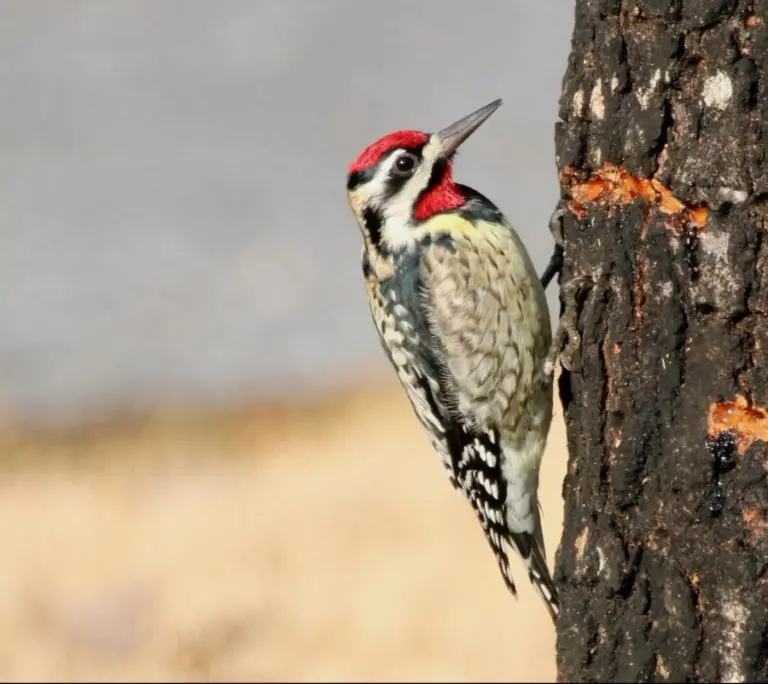
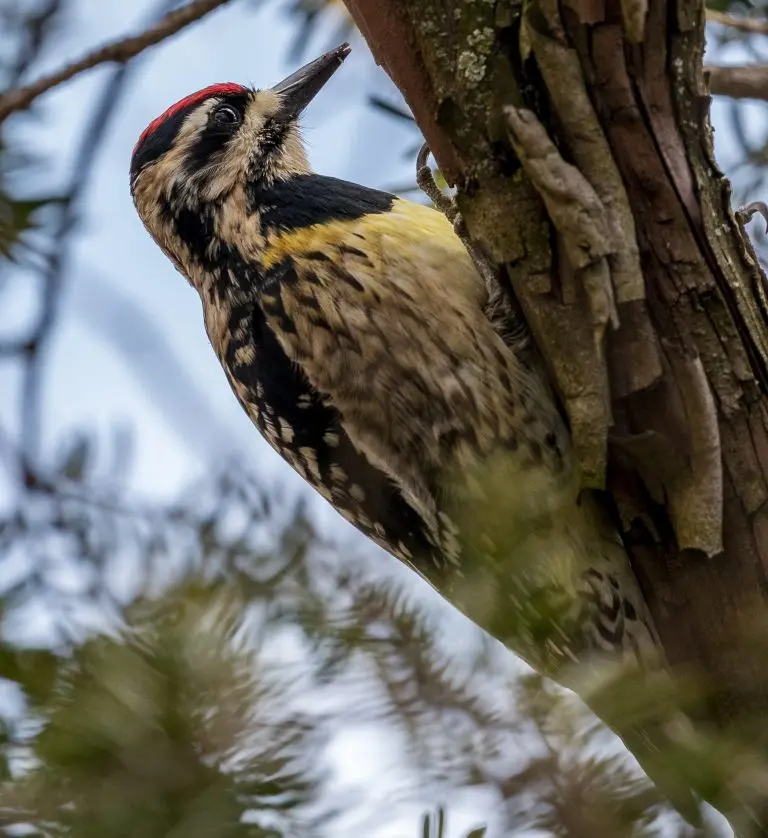
Yellow-bellied Sapsuckers can be found in Alabama during winter, between October and May.
Yellow-bellied Sapsuckers are relatively small and are about the size of a robin. They are mostly black with red foreheads, and the male has a red throat.
Length: 7.1-8.7 in (18-22 cm)
Weight: 1.5-1.9 oz (43-55 g)
Wingspan: 13.4-15.8 in (34-40 cm)
They migrate from Canada and Northeastern US states after breeding in the summer and spend the winter in the Southern US and Mexico.
Yellow-bellied Sapsuckers make holes in trees and use their brush-tipped tongues to get the sap out. They make neat rows of holes in horizontal rows, so look out for these in young paper birch, yellow birch, red or sugar maple, and hickory trees.
The holes need to be maintained to ensure a flow of sap. They make a loud mewing call, and they nest in tree cavities and usually have 5-6 white eggs.
Where to spot Yellow-bellied Sapsuckers:
Young deciduous forests often on birch or maple trees where they make neat rows of sapwells to feed.
How to attract more Yellow-bellied Sapsuckers to your backyard:
Although not usually found at bird feeders, Yellow-bellied Sapsuckers sometimes will come for suet.
7. Hairy Woodpecker
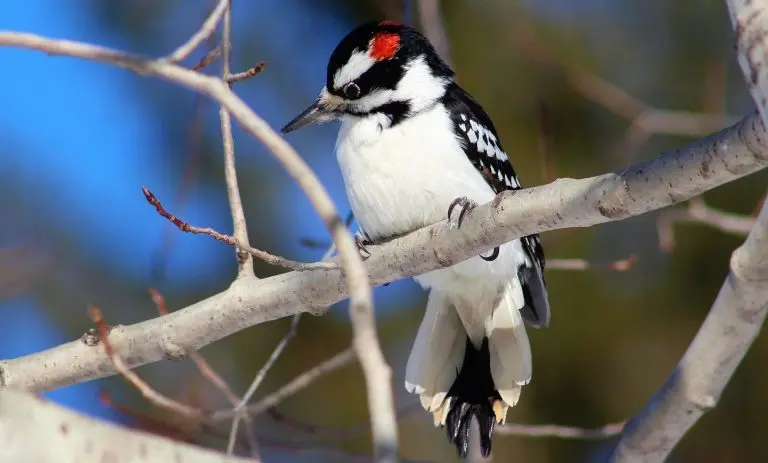
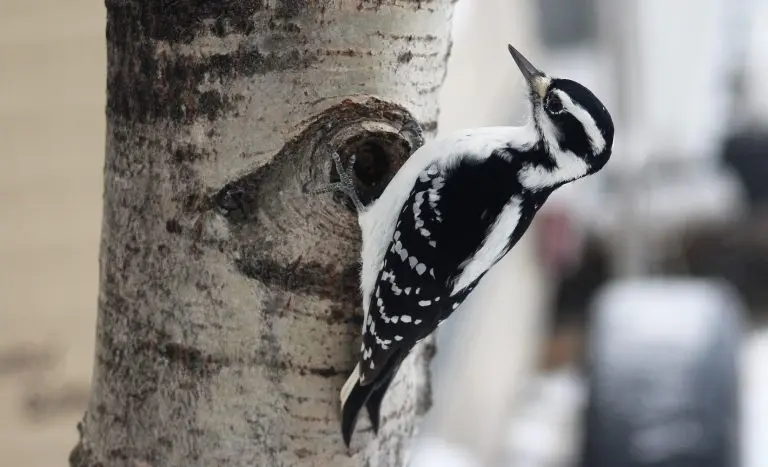
Hairy Woodpeckers are not that common in Alabama, but they are seen in the state all year.
Hairy Woodpeckers are medium-sized woodpeckers with a black and white pattern and a large white patch on their backs. The males have a flash of red towards the back of their heads.
Length: 7.1-10.2 in (18-26 cm)
Weight: 1.4-3.4 oz (40-95 g)
Wingspan: 13.0-16.1 in (33-41 cm)
Hairy Woodpeckers are visually similar to the Downy woodpecker but larger, and they have a longer bill. As they are often found in the same areas, it is hard to tell them apart.
They can be found across all US states and most of Canada and into Mexico. They can be seen on backyard feeders and are powerful small birds that make a whinnying sound or explosive peak calls.
Hairy Woodpeckers’ diet is mostly insects such as beetle larvae, ants, and bark beetles, but they will also eat bees, caterpillars, spiders, moth pupae, and millipedes.
This Woodpecker nests in the cavities of dead trees or dead parts of trees and lay between 3-6 white eggs.
Hairy Woodpecker sounds
The hairy Woodpeckers drum sounds similar to the Downy Woodpecker, but it is faster, and you cannot hear the individual drums as clearly.
Where to spot Hairy Woodpeckers:
You can find Hairy Woodpeckers in woodlands on trunks or main branches of large trees, but they are also found in a wide variety of habitats, including woodlots, parks, and cemeteries.
How to attract more Hairy Woodpeckers to your backyard
Hairy Woodpeckers benefit from squirrel-proof suet feeders with a cage to stop larger birds from taking all the turns. Also, black oil sunflower seeds attract more Hairy Woodpeckers to your yard, and if you combine them with suet in a great combination suet and hopper feeder, then you get two feeders in one.
8. Red-cockaded Woodpecker
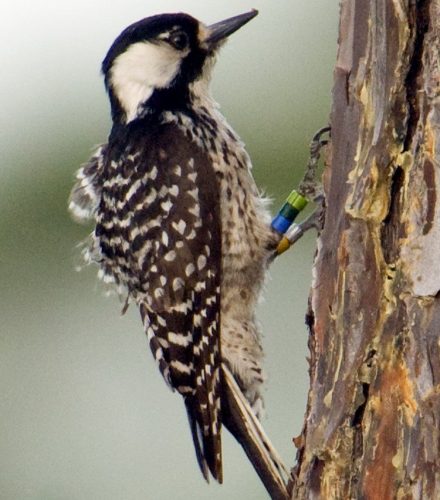
Red-cockaded Woodpeckers are rare in Alabama, but some were seen in Conecuh National Forest and Talladega National Forest.
Red-cockaded Woodpeckers are endangered and are small and hard to spot, being only robin-sized.
They have black and white stripes on their backs, paler underneath with large white cheek patches. Males have a nearly invisible red line on their cheeks.
- Length: 7.9-9.1 in (20-23 cm)
- Weight: 1.5-1.8 oz (42-52 g)
- Wingspan: 14.2 in (36 cm)
Red-cockaded Woodpeckers have a small range in Southeastern US states.
Due to habitat loss due to logging of the old longleaf pines, Red-cockaded Woodpeckers are now endangered, with a decline in numbers of 86% since 1966. They forage in groups in pine trees and eat insects and larvae, such as ants, beetles, centipedes. They will also eat seeds and fruit such as pine seeds, wild cherries, grapes, blueberries, and grapes.
Nests of the Red-cockaded Woodpecker are made in pine trees that have been softened by the red heart fungus. They lay 2-5 white eggs and drill sapwells below the nest cavity, so the leaking sap deters predators.
How to attract more Red-cockaded Woodpeckers to your backyard:
Red-cockaded Woodpeckers may be attracted to your backyard with fruit such as berries if you live near pine forests. Try planting native berry-producing plants such as grape, bayberries, hackberries, or elderberries.
23. Ivory-billed Woodpecker
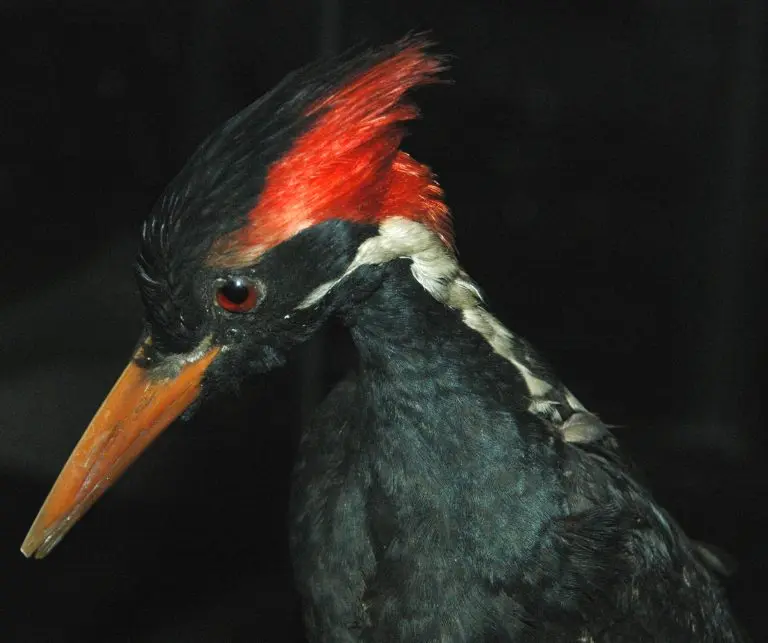
Ivory-billed Woodpeckers are considered an accidental species in Alabama, and according to records, they have only been spotted in the state three times.
Ivory-billed Woodpeckers were considered critically endangered and did not migrate. However, they have been thought to have been seen along the Gulf Coast in Arkansas, Louisiana, and Florida.
Unfortunately, declaring them as extinct has started as no verified recordings have been found in many years.
How Frequently Woodpeckers are Spotted in Alabama in Summer and Winter
Checklists for the state are a great resource to find out which birds are commonly spotted. These lists show which woodpeckers are most commonly recorded on checklists for Alabama on ebird in summer and winter.
Woodpeckers in Alabama in Summer:
Red-bellied Woodpecker 35.7%
Downy Woodpecker 21.2%
Pileated Woodpecker 8.9%
Red-headed Woodpecker 8.8%
Northern Flicker 3.4%
Hairy Woodpecker 2.7%
Red-cockaded Woodpecker 0.3%
Yellow-bellied Sapsucker <0.1%
Ivory-billed Woodpecker <0.1%
Woodpeckers in Alabama in Winter:
Red-bellied Woodpecker 36.3%
Downy Woodpecker 28.8%
Northern Flicker 13.3%
Yellow-bellied Sapsucker 13.3%
Pileated Woodpecker 7.2%
Red-headed Woodpecker 6.5%
Hairy Woodpecker 3.4%
Red-cockaded Woodpecker 0.2%
Ivory-billed Woodpecker <0.1%

